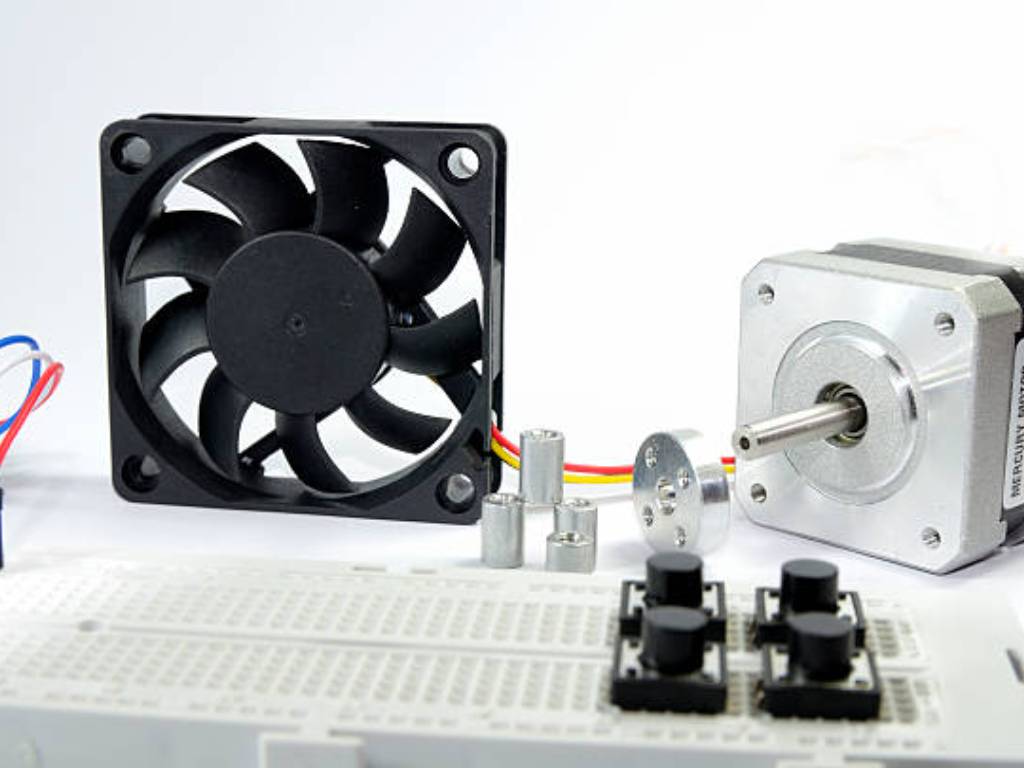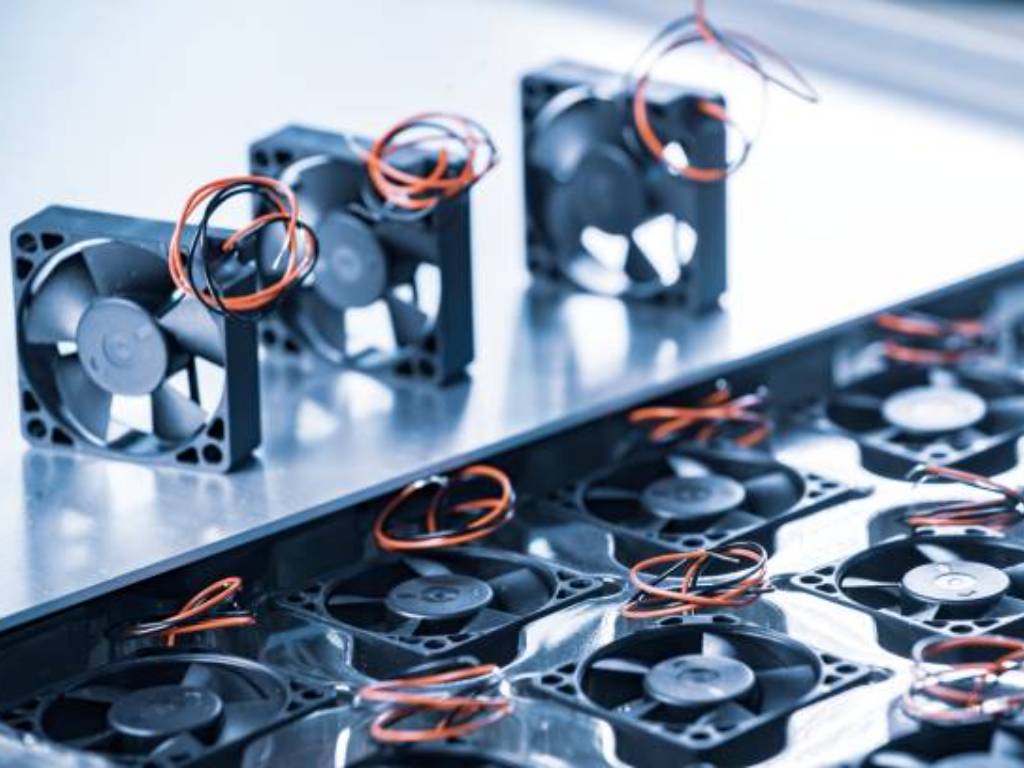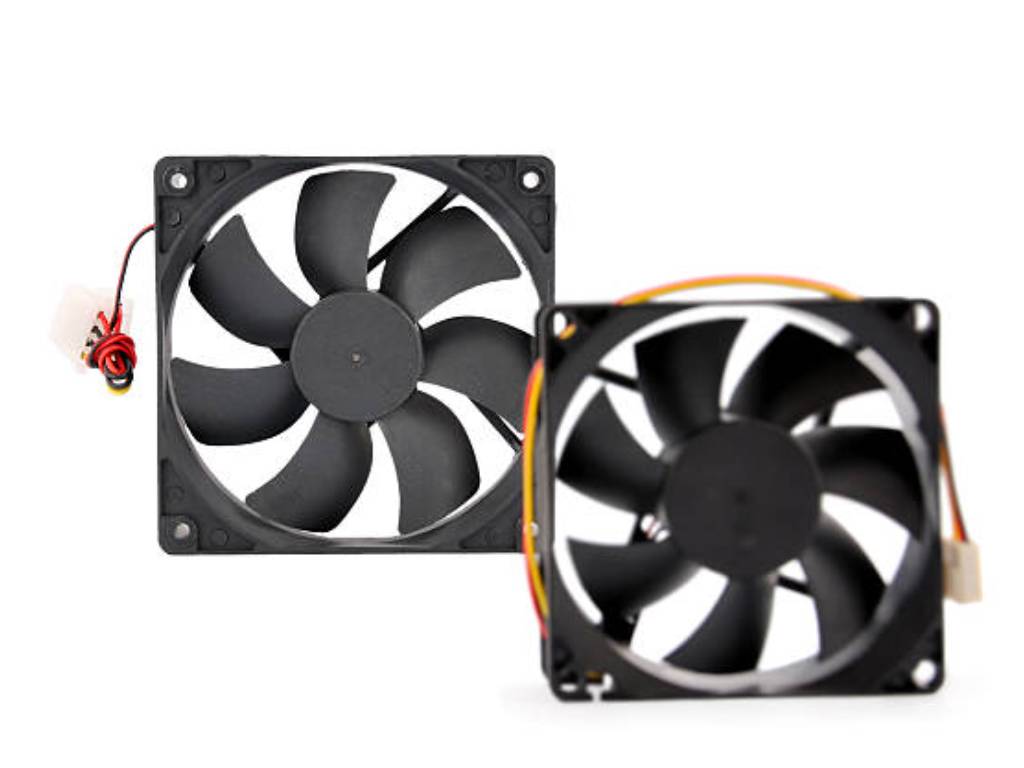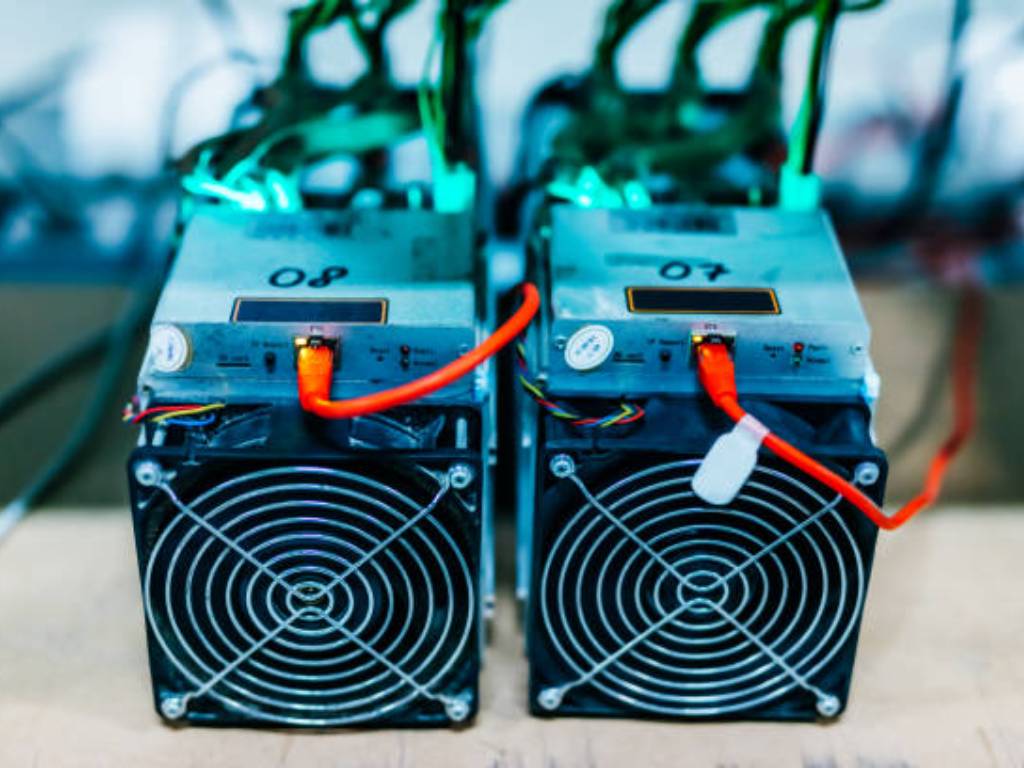
dc fan vs ac fan
Introduction
Fans are widely used in the cooling process, for example. AC (Alternating Current) fans and DC (Direct Current) fans are the two main types of fans. While they both are the same in that they move air and cool the air, they differ in many aspects.
Here, we will delve into the major differences between AC fans and DC fans, no matter ceiling fans or industrial cooling fans. This will assist you in making the right decision when you are selecting a cooling system for your needs. In computer cooling, greenhouse ventilation, or industrial applications, you need to know the advantages and disadvantages of AC fans and DC fans.
Advantages of AC Fans for Industrial Applications
Industrial applications AC fans are a common thing because of their specific benefits. Let’s explore now some of these benefits in more detail.
Cost-Effectiveness and Affordability for Large-Scale Industrial Use
The main pluses of AC fans in industrial applications are their cost-effectiveness and affordability. AC power supply is more common than DC. It is also compatible with the current electrical systems. This is a main reason for large-scale production in the industry. AC motors of an AC fan usually have a lower cost than DC motors. This is one of the factors that makes AC fans a more cost-effective choice.
Therefore, AC fans are not only a logical and inexpensive option but also an economical choice for industrial cooling needs. Additionally, these fans can be purchased in a variety of sizes and power ratings. This enables the possibility of fulfilling specific industrial demands. AC fans provide not only an inexpensive option but also a solution for industrial applications, regardless of whether they are for cooling large industrial spaces or providing ventilation in manufacturing facilities.
Powerful Airflow and Wide Coverage for Extensive Cooling Requirements
The other benefit of AC fans for industrial use is their high air flow and wide coverage. AC fans are able to move a huge amount of air. It is these qualities that make them perfect for cooling large factory areas. The air movement produced by AC fans can be quite long. It guarantees that industrial environments of any size are able to get the necessary cooling.
Unlike DC fans, AC fans are designed to deliver a faster air movement. This can make a very huge difference in industrial cooling needs. The strong air flow of the AC fans has the potential to regulate the prevailing temperatures and to enhance the air circulation in the industrial areas. AC fans provide dependable and energy-saving cooling systems, either for the cooling of machines, for the dissipation of heat from equipment, or for ventilation in industrial facilities.
Compatibility with Existing Industrial Electrical Systems
AC fans can be easily integrated into the existing power grids of industrial facilities. This factor increases their attractiveness as a cooling tool for industrial purposes. AC power, which is the usual power supply in most industrial environments, is easily accessible. It is also being used together with existing infrastructure.
Thus, the AC fans can be easily put into the existing electrical system without involving any extra modifications or converters. The AC motors employed in AC fans are built on the induction principle. This helps achieve the effective conversion of electrical power into kinetic energy. In this case, AC compressors are reliable and can be used for long-term operations in industrial settings.
The ease of installation of AC fans with existing electrical systems is what makes their installation easy. It is also an important factor in the easy integration into industrial cooling systems.

ac and dc fans
Benefits of DC Fans for Industrial Cooling
While DC fans have some features, they also have huge benefits for industrial cooling. Let us analyze some of the DC fans benefits in industrial applications.
Energy Efficiency and Reduced Running Costs for Long-Term Savings
DC fans are usually very energy efficient, which makes them an ideal solution for industrial cooling. Unlike AC fans, DC fans are more energy-efficient in terms of using less energy to produce the same amount of airflow. This implies that DC fans can have the same cooling performance as conventional ones but use less electricity.
Consequently, they provide cheaper operations and long-term economies. The DC motors are the reason for DC fans having high energy efficiency. These motors are more efficient by their nature than AC motors. DC motors convert electrical energy into mechanical energy with higher efficiency than other types of motors. This results in a lesser amount of energy wasted and better performance.
In industrial applications where cooling needs are large, the energy savings offered by DC fans can be a substantial amount of money in terms of operating costs.
Smooth and Quiet Operation for a Noise-Free Environment
DC fans are famous for their smooth and noiseless performances. This makes them applicable to industrial sites that are in need of quiet areas. The DC motors of the DC fans are based on the principle of ECM with permanent magnets. This leads to a smooth and vibration-free operation.
The DC motors inherently do not make use of brushes; therefore, the brushes no longer have the friction and noise associated with brush-based motors. This is due to the fact that the engine noise is diminished. DC fans are the quietest and least vibrating fans that can be used in industrial settings where noise reduction is the most important. It is particularly useful for situations like medical facilities, labs, and recording studios.
In such a situation, noise can be detrimental to the operating conditions of delicate machinery. The magnetic field created by the permanent magnets in DC motors is also one of the factors that makes them work smoothly. The fact that the brushes are absent and the use of electronic switching in DC motors has been replaced with electromagnetic interference. This enables a noise and interference free environment in the industrial setup.
Precise Speed Control and Versatility for Cooling
DC fans boast of having the ability to adjust speeds and are also suitable for cooling applications. In contrast to AC fans, which usually have limited speed options, DC fans can be easily controlled to get the desired airflow and cooling effect. This is accomplished using DC supply and direct current in DC fans. DC fans can be controlled through voltage, current, temperature, resistance, or PWM signal.
Thus, the fan speed can be accurately adjusted depending on the cooling needs. The ability of DC fans to operate at different speeds is one of the factors that makes them suitable for numerous industrial applications. They can be employed in order to cool down sensitive electronic equipment or for air conditioning only in particular areas. The ability to change the fan speed also helps in reducing energy consumption and in maximizing cooling efficiency.
Through setting the fan to the desired speed, the life of the fan can be extended and waste of energy can be prevented. The DC fans’ ability to adjust speed makes them a diverse product for industrial cooling applications.
AC vs DC Fans
When comparing AC fans and DC fans, there are several key factors to consider. Let’s take a closer look at some of the main differences between these two types of fans.

AC vs DC Fans
Energy Efficiency
In the area of energy efficiency, the AC fans and the DC fans have a large gap. AC fans usually use more power than DC fans. This is because of its inherent design and the process of converting alternating current (AC) into mechanical energy.
On the contrary, DC fans have a reputation for being energy efficient. They work on direct current (DC) and use brushless DC motors. Therefore, DC fans are more energy efficient than AC fans. The energy efficiency of DC fans can translate into considerable cost savings during the equipment’s lifetime.
DC motors in DC fans are designed to convert electrical current into mechanical energy in a very efficient way. This minimizes power losses. The efficiency is improved by using permanent magnets in the motor. Such magnets produce a magnetic field that is as strong as possible without the need for extra electrical current.
Thus, DC fans can offer the same cooling effect as AC fans while using less power. The fact that they are environmentally friendly and cost-effective makes them a choice for industrial cooling applications.
Noise Level
The noise level is also one of the essential factors to take into account while comparing AC fans and DC fans. AC fans are often quite noisy. This is caused by the motor’s vibrations and the air-fan blades’ interaction. The alternating current electricity can be a source of unstable operation of the motor. This results in the rise in the noise levels.
On the contrary, DC fans are generally much less noisy. This is majorly because of their brushless motors and air circulation, that is more streamlined. The absence of brushes in DC motors prevents the friction and sparking that are associated with brush-based motors. It is done by means of low noise emissions.
Not only do DC motors utilize permanent magnets, but this feature also provides a more stable and consistent magnetic field. This makes the vehicle more silent and stable. The steady and quiet operation of DC motors is due to the fact that they have constant and smooth DC current.
The benefit of DC fans is that they operate at low noise levels and help to create a more calm and efficient industrial environment. This is a great way to make the workers feel more comfortable and productive. This is of utmost importance, especially in those industries where noise reduction is a key priority, for example health care facilities, laboratories, and precision manufacturing plants.
Speed Control and Airflow
AC fans and DC fans have different characteristics in terms of speed adjustment and airflow. AC fans typically have few speed control options, if any at all, since they usually use fixed-speed motors or simple stepped speed controllers. This can lead to a lack of ability to adjust the airflow to the particular cooling needs.
However, in DC motors, the speed control is more exact and flexible compared to that of AC motors. They usually employ electronic controllers and variable speed motors, which enable them to set customized airflow delivery according to specific cooling needs and energy use efficiency. DC fans can be easily controlled using DC voltage, and therefore, they can have a wide range of speed settings. The final advantage of this type of control is that it is helpful in applications where the exact temperature regulation is of utmost importance.
Suitability for Harsh Environments
Another important factor to consider is the suitability of AC fans and DC fans for the harsh surrounding. In most cases, AC fans may not be as durable as they should be in extreme conditions. Dust, moisture and temperature fluctuations can affect their motors and components, which may lead to the early wear and tear.
On the contrary, DC fans are more frequently seen in tough applications because of their enclosed motors and corrosion-resistant materials. Nevertheless, the durability gap between AC and DC fans has been closing due to the progress in the manufacturing processes.
Both AC and DC fans from the reputed brands ACDCFAN are subjected to the examination for noise, temperature, humidity, and salt spray resistance, which guarantee the top quality and reliable operation in harsh conditions.
| AC Fans | DC Fans |
| Higher power consumption | Lower power consumption |
| Less energy-efficient | More energy-efficient |
| Higher operating costs | Lower operating costs |
| More environmental impact | Less environmental impact |
Cost Implications
Cost is an important consideration when comparing AC fans and DC fans. While the initial cost of AC fans may be lower compared to DC fans, there are cost implications to consider in the long run.
AC fans may have lower upfront costs, but they can consume more energy and have higher operating costs compared to DC fans. The energy efficiency of DC fans leads to lower energy consumption and reduced operating costs over time. This means that while DC fans may have a higher initial cost, they can result in long-term cost savings.
It is important to evaluate the specific cooling requirements and operating conditions to determine the cost implications of AC fans and DC fans. Factors such as energy consumption, maintenance requirements, and lifespan should be taken into account when considering the overall cost-effectiveness of the fan.

cooling fans
Conclusion
The main point to be remembered when choosing the cooling system for a given application is an understanding of the key differences between AC and DC fans. AC fans are a cost-effective solution, they generate powerful airflow and are compatible with existing electrical systems. This is the reason for their suitability for large-scale industrial cooling. On the other hand, the characteristics of DC fans are: they are energy-efficient, operate smoothly and quietly, and offer variable speed control. They are best suited for applications that are concerned with energy savings and noise reduction.
On the choice between AC and DC fans, consider the energy efficiency, the noise level, the speed control, the durability in harsh environments, and the cost implications. Through considering these elements in your particular context, you can make a decision on the fan type that is most suitable for you.
In case you need any additional help in selecting the right fan for your industrial applications, you can book a free consultation with our experts right now.
Frequently Asked Questions
Can fans of AC and DC be used in fan cooling system instead of each other?
The AC and DC fans, in general, are different in their working principles and power requirements. AC fans work on an alternating current, while DC fans require a direct current power supply. While DC fans cannot be directly used with AC voltage, they can be modified to work with it by using a DC converter, either externally or as part of the fan motor. The use of this enables a DC fan to be powered from an AC supply with the proper conversion.
Are DC fans better for computer cooling?
Yes! DC fans are the most commonly used fans for computer cooling because of their accuracy in speed control, low noise, and energy efficiency. DC stands for direct current, which enables the motor to be precisely controlled by speed. This adaptability leads to the best cooling performance while reducing noise and power consumption. DC fans’ small sizes make them fit into the small cases and cramped spaces.
Can DC fans be used for greenhouse ventilation?
Of course! DC fans can be employed for greenhouse ventilation. They enable the exact speed adjustment that is necessary to control the air flow, which is based on the plants’ requirements. DC power supply turns on quietly in order to avoid any disturbance to the plants. Their energy efficiency helps cut down the operating costs, which makes them perfect for providing efficient and effective ventilation in greenhouses.





